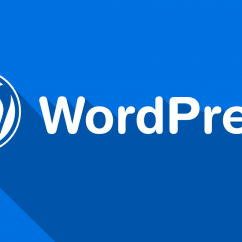Jewelry ECOMM Tech
Where To Start With Your SEO October 21, 2020 (0 comments)

Ready to get your website optimized for Google? If you've never done any Search Engine Optimization before, here's a look into what it takes to rank higher on Google.
We won't go into a deep technical tutorial here on each step - however, this should give you an idea of what goes into it.
- Formatting Words
- Formatting Images
- Internal Links
- Inbound Links
- Technical SEO
- Website Traffic
Formatting Words
The first thing Google looks at when exploring your website is what the website is about. The more relevant information you have on your website compared to the Google search will help Google understand if you're the right website to show to their visitor. If a Google user is searching for Women's Unique Engagement Rings and you have words, products, and images on your website all about women's unique engagement rings, Google is much more likely to show your website at the top of the results to your user.
Not only do you need the right content (blog posts, etc), but it has to be formatted the right way. For example, which words you put in the "headlines" of your website will tell Google that's the primary topic of that article. Additionally, Google treats words at the top of your article as the most significant.
Personally, I usually write a full article on a topic, and then go through it a second time to restructure and rewrite parts of the article to be better SEO optimized.
Formatting Images
Another big factor that helps Google learn what your website is about is naming your images correctly.
Google doesn't have the ability to scan an image and know what the image is. Instead, it relies on how you name the image.
This is a big mistake many businesses make without knowing it. When you upload an image to your website, it may have a default filename - like a SKU or some random string of numbers. You should always rename the image to be a bit descriptive about what the image really is.
These are called "alt" tags. From a coding standpoint, the structure of the image HTML would look like this:
Alt text is contained within the image tag: <img src="myimage.png" alt="nike_air_zoom" />.
In the above example, the image is named myimage.png, but there is an alt tag saying "nike_air_zoom" so that Google knows this is a picture of a Nike Air Zoom.
Today, most website platforms have a built in editor where you can simply rename your image and give it an alt tag - rarely nowadays will you ever have to go into your HTML code and edit this that way.
Internal Links
Not only does Google scan the words and images on your website, but it also studies the links within your website that link to other pages on your website.
This helps Google see which pages and topics are related to each other.
Internal links are those that point from one page to another on your site. External links, by contrast, are ones that point to a page on another domain.
Internal Links are an often-neglected part of SEO. But it's really important. You see, some pages on your website are known because Google has already crawled them before. Other pages are discovered when Google follows a link from a known page to a new page.
Therefore, it's really important to put links throughout your website that link to other, similar-topic pages on your website.
Inbound (External) Links
Probably the most important aspect of SEO, "inbound links" are any links that another website has on their website that directs people back to your website.
Google looks at links as proof of trust and authority. The "bigger" the link, the more reputation you'll get in Google's eyes.
For example, if you're a local shoe company and Nike mentions you with a link to your website, that's an ENORMOUS score. It's the biggest company in your niche linking back to your website.
That's why every link that someone puts on their website that directs back to your website is incredibly important. The more links you have back to your site, the more Google will trust your website as the right page to show their searchers.
Link building is a very in-depth strategy, and it's one reason why SEO takes ongoing work and some real financial investment. Your digital marketing company - if hired to perform SEO for you - should not only be formatting your website properly, but they should also be looking for new linking opportunities.
Technical SEO
Technical SEO refers to improving the technical aspects of a website in order to increase the ranking of its pages in the search engines. Making a website faster, easier to crawl and understandable for search engines are the pillars of technical optimization.
Google wants their users to have the best experience possible after they search for something. If Google knows your website has technical problems (for example, if its super slow or not mobile responsive) they simply won't show your website to the searcher.
Website Traffic
This is the one SEO factor that you don't have direct control over. Simply put, big websites with lots of traffic are going to get higher rankings in Google. Google is much more likely to show a website with thousands of monthly visitors over a brand new site. Why? Because if a website is consistently getting high relevant traffic month over month, Google trusts that the site is giving the searchers the right information they're looking for.
Some things just take time, and this is one of them. One of the most misunderstood expectations of client's I've worked with is that they underestimate how difficult it is to outrank competitors who have had a strong website presence for a long time. Look at Blue Nile, for example - do you think it will be easy to outrank them? For some very specific niche terms, yea.
Do you have any ideas or comments? Let us know in our Jewelers Succeeding Online Facebook group!


